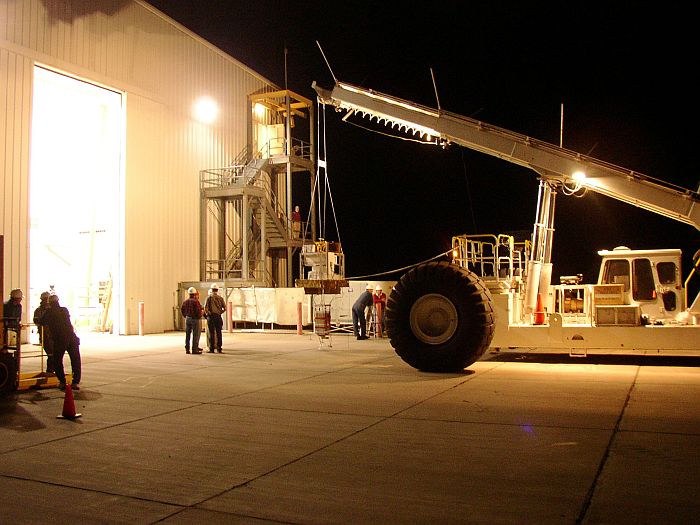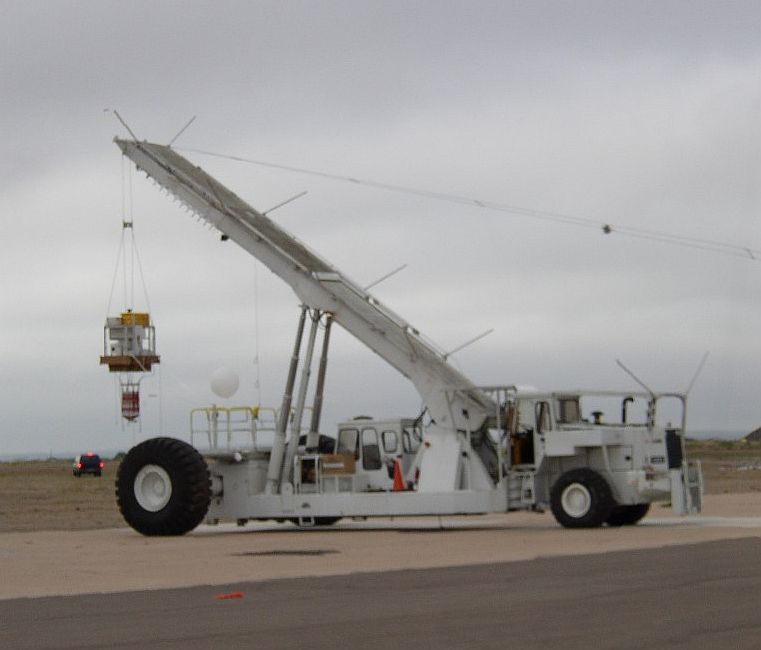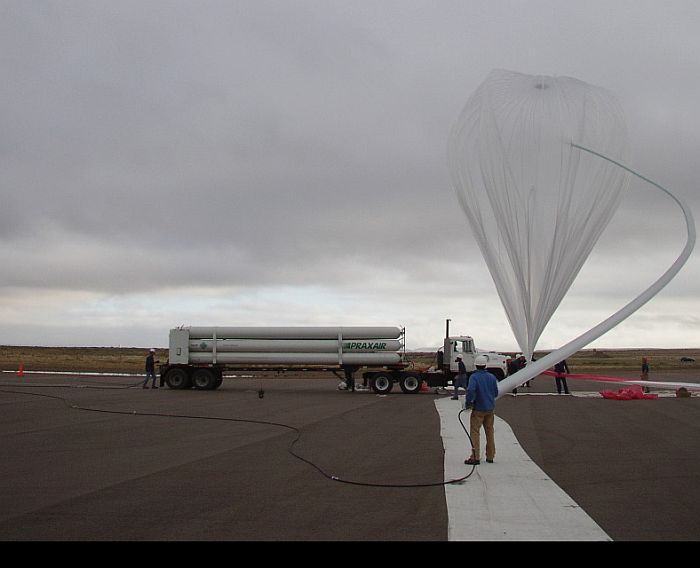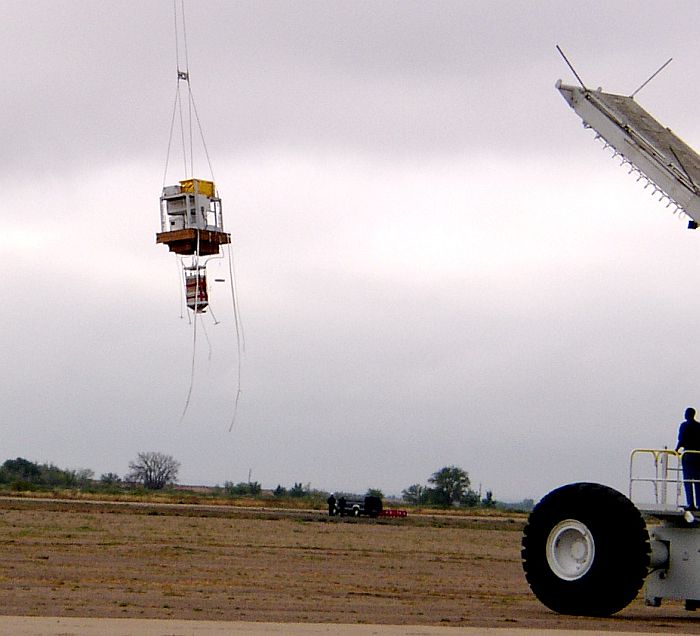Purpose of the flight and payload description
An instrument to study the characteristics and spectrum of cosmic ray heavy ions and protons at atmospheric levels comparable with the surface of Mars.
The future device will reveal what kind of neutron energy spectrum astronauts are exposed to from neutrons inside a spacecraft, alerting the occupants when dangerous levels occur.
In this experimental flight approximately 750,000 neutrons were detected by two differente detector systems over a period of 22 hours at float altitude.
Also present in the gondola was a secondary experiment called CHESS (Cosmic ray High altitude Experiment by Science Students). It was a science experience performed by Roosevelt High School students to detect cosmic rays.
Finally, also piggybacking on board for this flight, were another high school experiment (ping pong balls in a white cardboard box), and a Discovery Channel high-definition video camera.
Video of preparations for the mission, balloon launch and ascent
Details of the balloon flight

Balloon launched on: 10/9/2003 at 14:20 utc
Launch site: Scientific Flight Balloon Facility, Fort Sumner, (NM), US
Balloon launched by: National Scientific Balloon Facility (NSBF)
Balloon manufacturer/size/composition: Zero Pressure Balloon 600.000 cu ft3 - SF3-.603-.8/0-NHR
Balloon serial number: R.603-0-01
Flight identification number: 525N
End of flight (L for landing time, W for last contact, otherwise termination time): 10/10/2003 at 15:18 utc
Balloon flight duration (F: time at float only, otherwise total flight time in d:days / h:hours or m:minutes - ): ~ 25 h
Landing site: 40 miles WNW of Socorro, New Mexico, US
The balloon was launched by dynamic method using launch vehicle (Tiny Tim) on October 9, 2003 at 14:24 utc
Float altitude of near 26 km was achieved at 15:35 utc
The payload was cut down at 15:18 utc on october 10, and landed at 15:48 utc
External references
- CHESS experiment website via Archive.Org
- The NSBRI/APL Neutron Energy Spectrometer Johns Hopkins APL Technical Digest, Volume 27, Number 1 (2006)
686If you consider this website interesting or useful, you can help me to keep it up and running with a small donation to cover the operational costs. Just the equivalent of the price of a cup of coffee helps a lot.






